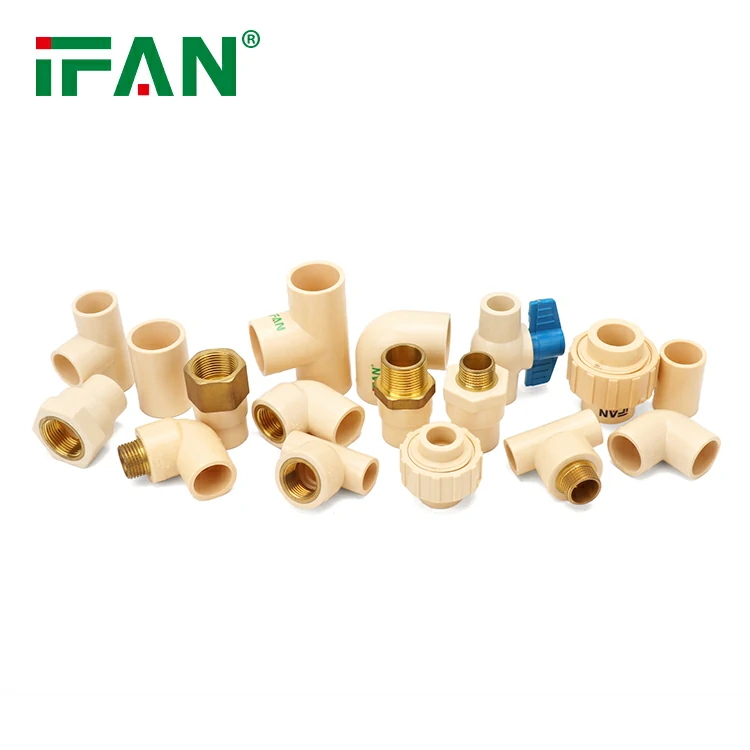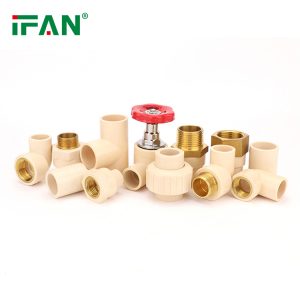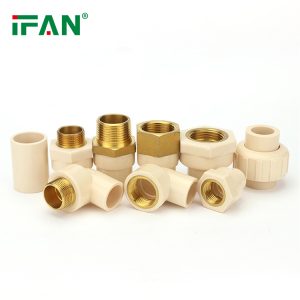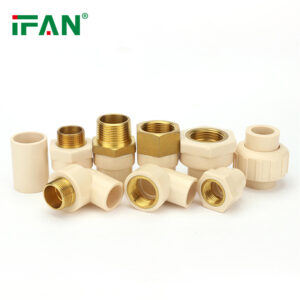
ASTM2846 The Environmental Benefits of Using CPVC Fittings in Construction
Whatsapp Us
Share
Description
IFAN factory 30+ years manufacture experience support color /size customization support free sample.Welcome to consult for catalog and free samples.This is our Facebook Website:www.facebook.com,Click to watch IFAN’s product video.Compared with Tomex products, our IFAN products from quality to price are your best choice, welcome to buy!
CPVC (Chlorinated Polyvinyl Chloride) fittings have gained significant popularity in the construction industry due to their durability, versatility, and cost-effectiveness. As the construction industry continues to evolve, so too does the demand for more sustainable and environmentally friendly materials. CPVC fittings are not only designed to perform well in various plumbing and piping systems but also offer several environmental advantages. This article will explore the environmental benefits of using CPVC fittings in construction, focusing on their sustainability, energy efficiency, and overall impact on reducing environmental footprints.
What Are CPVC Fittings?
CPVC fittings are plumbing components made from chlorinated polyvinyl chloride, a thermoplastic polymer that is widely used in water distribution systems. Unlike traditional PVC, CPVC has been modified with chlorine to withstand higher temperatures, making it ideal for both hot and cold water systems. CPVC fittings come in various shapes, sizes, and designs, including elbows, tees, couplings, and adapters, all of which are used in plumbing and piping systems for residential, commercial, and industrial applications.
1. Durability and Longevity
One of the key environmental benefits of CPVC fittings is their durability and long lifespan. CPVC pipes and fittings are resistant to corrosion, scaling, and pitting, which are common issues in metal piping systems. This resistance extends the lifespan of the fittings, reducing the need for frequent replacements and minimizing waste. By using CPVC fittings, the overall longevity of plumbing systems is significantly increased, which directly contributes to reduced material consumption and waste generation in the construction industry.

2. Reduced Environmental Footprint
CPVC fittings are produced with a lower environmental impact compared to traditional metal alternatives. The production process of CPVC is more energy-efficient, and the raw materials required for CPVC manufacturing are less energy-intensive than those needed for metal pipe production. Additionally, CPVC is lighter than metal pipes, which reduces transportation costs and associated greenhouse gas emissions. When considering the entire lifecycle of a product—from manufacturing to disposal—CPVC fittings have a lower environmental footprint, making them a more sustainable choice for construction projects.
3. Energy Efficiency
CPVC fittings are known for their superior insulating properties. The material’s low thermal conductivity helps prevent heat loss in hot water systems, improving energy efficiency in buildings. This can result in significant energy savings over time, as less energy is needed to maintain water temperatures. In addition to the energy savings, this insulation quality can also help reduce heating costs for homeowners and businesses, further promoting sustainable energy use.
4. Recyclability of CPVC
Another environmental advantage of CPVC fittings is that they are recyclable. Although not as widely recycled as other materials, CPVC can be repurposed at the end of its lifecycle. Many manufacturers and recycling centers have adopted methods to recycle CPVC products, diverting waste from landfills and reducing the overall environmental impact. Recycling CPVC fittings not only reduces the demand for virgin materials but also helps conserve valuable resources, making it a more sustainable choice for the construction industry.
5. Low Maintenance Requirements
CPVC fittings require minimal maintenance, which helps reduce the need for chemical cleaning agents or harsh maintenance procedures. In contrast to metal pipes, which often require frequent cleaning to remove buildup and prevent rust, CPVC fittings resist chemical degradation and do not require the use of toxic chemicals. By reducing the need for maintenance and harsh treatments, CPVC fittings help promote a cleaner and safer environment, both during their use and at the end of their life cycle.
6. Less Chemical Impact
CPVC fittings do not leach harmful chemicals into water or the environment. They are resistant to chemicals and are safe for potable water systems, which is a significant advantage for both human health and the environment. Unlike some older materials, CPVC does not release toxic substances when exposed to heat or pressure, ensuring that it does not pose a risk to the surrounding environment. The use of CPVC fittings can also reduce the likelihood of contamination in water systems, making it a safer and more sustainable option for construction projects.
7. Water Conservation Benefits
Water conservation is a growing concern in modern construction projects, and CPVC fittings play an essential role in this regard. The smooth surface of CPVC fittings helps prevent blockages and ensures that water flows efficiently through the system. As a result, less water is wasted, and the overall performance of water distribution systems is optimized. This efficiency reduces water consumption, which is crucial for promoting sustainability in construction, particularly in areas facing water scarcity issues.
8. Cost-Effectiveness
While CPVC fittings may have a higher initial cost compared to some materials, the long-term benefits far outweigh the investment. The durability, energy efficiency, and low maintenance of CPVC fittings reduce overall costs for property owners and construction projects. Over time, the reduced need for replacements and repairs, coupled with energy and water savings, makes CPVC fittings an economically viable and environmentally friendly option.
Conclusion
CPVC fittings offer several significant environmental benefits, making them a smart choice for the construction industry. Their durability, energy efficiency, recyclability, and low maintenance requirements contribute to reducing the environmental impact of construction projects. By choosing CPVC fittings, builders, contractors, and homeowners can make a positive contribution to sustainability while also enjoying long-term cost savings. As demand for sustainable materials continues to grow, CPVC fittings will undoubtedly play a critical role in creating more eco-friendly construction practices.
FAQ
1. What are CPVC fittings used for?
CPVC fittings are primarily used in plumbing systems for both hot and cold water distribution. They are commonly used in residential, commercial, and industrial construction projects due to their durability and resistance to corrosion.
2. Are CPVC fittings environmentally friendly?
Yes, CPVC fittings are environmentally friendly due to their long lifespan, recyclability, energy efficiency, and minimal need for maintenance, all of which help reduce waste and energy consumption in the construction industry.
3. Can CPVC fittings be recycled?
Yes, CPVC fittings can be recycled at specialized recycling centers. While not as commonly recycled as other materials, there are efforts to repurpose CPVC products and reduce waste in landfills.
4. Are CPVC fittings resistant to heat?
Yes, CPVC fittings can withstand higher temperatures than traditional PVC, making them ideal for use in hot water systems. They are commonly used in both residential and commercial plumbing applications.
5. How long do CPVC fittings last?
CPVC fittings are highly durable and can last for many years without requiring replacement. Their resistance to corrosion and chemical degradation extends the lifespan of the plumbing system, reducing the need for frequent repairs or replacements.
Related products
-
CPVC ASTM2846
Redefining Piping Excellence: CPVC Fitting Socket
-
CPVC ASTM2846
What does compression size mean?








